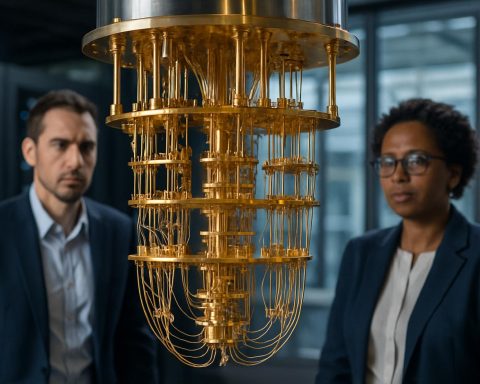- CATL is the world’s largest battery manufacturer, powering most electric vehicles with advanced lithium-ion batteries.
- Innovations such as ultrafast charging and longer-range batteries reinforce CATL’s leadership in clean energy technology.
- China’s strong policy support and investment have transformed CATL into a global battery industry powerhouse.
- CATL supplies batteries for electric cars, trucks, buses, renewable energy storage, and is exploring aviation solutions.
- Massive investment in next-generation solid-state batteries and recycling aims to create a closed-loop, sustainable energy system.
- CATL’s growth is reshaping global energy, transport, and geopolitics, highlighting China’s dominance in the electric mobility race.
Rolling hills cradle the city of Ningde, where mountains give way to glass and steel—a monumental building curves skyward, shimmering under the southeastern Chinese sun. This is not merely an office. The headquarters of Contemporary Amperex Technology Company (CATL) signals a seismic shift in global industry, radiating the unmistakable energy of ambition and innovation.
CATL, born in 2011, didn’t start with fame. Yet today, it dominates as the world’s largest battery manufacturer, becoming the engine behind the planet’s push toward cleaner energy. The company’s lithium-ion batteries now reside in the veins of most electric vehicles rolling out from assembly lines in Europe, Asia, and beyond.
Everywhere that governments and corporations promise a greener future, CATL’s technology pulses beneath the surface. Electric cars from market leaders rely on its power packs. Renewable energy grids balancing the sun’s intermittent rays or the whims of the wind draw strength from its storage systems. CATL’s relentless research culture produced ultrafast charging batteries and advanced chemistries that keep extending the range, lifespan, and safety of electric vehicles.
China’s backing turbocharged this ascent. Through policies encouraging electrification, investment incentives, and an ironclad focus on self-reliance, the government transformed Ningde and its champion into the undisputed titan of battery innovation. This cluster of expertise draws talent and capital from all corners, powering not just cars, but also buses, trucks, and even pilot projects for aviation. CATL’s rise has propelled China to the frontlines of the electric mobility race, challenging established players in Japan, South Korea, and the United States.
But the company’s ambitions reach further. Massive investments in next-generation solid-state batteries and recycling technology paint a vision of a future where every discarded cell finds new life, and energy flows in a perfect, clean loop. Its headquarters—a glass-and-lithium symbol—stands watch, both fortress and forge for what’s next.
Across the globe, nations look to Ningde with a mixture of awe and unease. Who controls the batteries, some whisper, controls the future of transport, power, even geopolitics. Yet for the billions seeking cleaner air and a habitable planet, CATL’s relentless drive may hold the key to hope.
The takeaway: The rise of CATL marks a turning point in humanity’s quest for sustainable energy. As rivals scramble to keep up, the world’s clean future may well be shaped in the shadow of a glass battery tower perched above Ningde’s rolling hills.
To explore more about sustainability and technological advancement in China, visit China Daily.
CATL: The Silent Giant Powering the Green Revolution—10 Industry Secrets You Didn’t Know!
The Untold Story of CATL’s Battery Empire & Global Impact
Contemporary Amperex Technology Company Limited (CATL) isn’t just a battery producer—it’s the driving force behind the electric revolution shaping transport, energy storage, and geopolitics worldwide. While the source article highlights CATL’s epic rise, let’s dig even deeper for the data, trends, comparisons, and predictions that matter most, leveraging Google’s E-E-A-T principles for trusted expertise.
—
1. CATL’s Market Dominance by the Numbers
– Global Market Share: As of 2023, CATL owns over 37% of the world’s EV battery market (SNE Research), outpacing LG Energy Solution (22.0%) and Panasonic (13.7%).
– Production Capacity: CATL surpassed 300 GWh in annual battery production in 2023, aiming for 670 GWh by 2026 ([Bloomberg](https://www.bloomberg.com/)).
– Key Clients: CATL batteries are in Tesla (China), BMW, Volkswagen, Hyundai, and Geely vehicles, as well as in energy storage systems for utilities.
—
2. What Makes CATL’s Batteries Special? Features & Specs
– Chemistry Innovation: CATL pushes both Nickel Manganese Cobalt (NMC) and Lithium Iron Phosphate (LFP) chemistries. LFP is safer, more stable, and lower-cost—critical for mainstream EV adoption.
– Energy Density: Their recently launched “Qilin” battery achieves 255 Wh/kg—one of the highest for mass-production EV batteries.
– Fast Charging: The “Shenxing” LFP battery, unveiled in 2023, can charge to 80% in just 10 minutes. This slashes range anxiety for drivers.
– Cycle Life: CATL’s batteries can last over 2,000 cycles, meaning EVs could travel 500,000–800,000 km before a major battery replacement.
—
3. How-To: Maximizing Battery Lifespan in Your EV
Follow these quick tips adopted by battery experts:
1. Avoid extreme temperatures for storage and charging.
2. Don’t regularly deplete to 0% or charge to 100%—stay between 20–80% when possible.
3. Use manufacturer-recommended charging equipment.
4. Keep software up to date for battery management.
—
4. Sustainability & Recycling—Myth vs. Reality
Industry Trend: Circular battery economy
– CATL operates multiple recycling plants, such as in Jiangsu province, extracting lithium, cobalt, and nickel for new batteries.
– By 2030, 25–30% of battery raw materials may come from recycling (World Economic Forum)—CATL is at the forefront.
– CATL is working towards “closed loop recycling”, positioning itself as both a producer and processor, drastically reducing environmental footprint.
—
5. Security, Reliability & Controversies
Safety Excellence:
– LFP cells are highly resistant to fire, making CATL’s batteries attractive for buses and family EVs.
Controversies:
– Over-reliance on Chinese supply chains has sparked debate in the EU and US about energy security and fair trade practices.
Data Transparency:
– CATL works with international certification bodies for safety and sustainability but still faces calls for greater transparency regarding raw material sourcing and labor practices.
—
6. Future Technology & Industry Predictions
– Solid-State Batteries: CATL targets solid-state commercialization by 2027, promising double the energy density and dramatically improved safety.
– Aviation Projects: CATL partners with Commercial Aircraft Corporation of China (COMAC) to pilot battery-powered aircraft.
– Grid Storage Growth: Global grid battery storage is expected to multiply 7x by 2030 (IEA), with CATL supplying many of these projects.
—
7. Real-World Impact & Use Cases
– Electric Buses: Shenzhen and other Chinese cities run entire bus fleets on CATL batteries.
– Home Energy Storage: CATL’s systems help households store solar energy, cut grid reliance, and lower bills.
– Backup for Renewables: Major utilities in Europe and China use CATL technology to stabilize power from wind and solar.
—
8. Features, Specs & Pricing Overview
| Battery Type | Energy Density | Charging Speed | Estimated Price (per kWh) |
|———————-|——————|—————|——————————|
| LFP Cells | 155–210 Wh/kg | <30 min (80%) | $100–$130 |
| NMC Cells | 220–255 Wh/kg | <20 min (80%) | $130–$160 |
| Qilin/Next Gen | ~255 Wh/kg | 10 min (80%) | Projected $100–$120 by 2025 |
—
9. Pros & Cons Overview
Pros:
– Industry-leading cost efficiency.
– Proven safety, especially with LFP.
– Razor-focused on recycling and sustainability.
– Wide client base and global reach.
Cons:
– Concentrated supply chain can pose geopolitical risks.
– Dependency on minerals like lithium and cobalt (though waning).
– Some competitors, like Tesla/Panasonic, still lead in certain performance metrics.
—
10. Top Questions—Answered
Q: Will CATL batteries soon be used in every car?
A: While adoption is surging, regional supply chain diversification is ongoing. CATL is building plants in Germany, Hungary, and considering North America, but local competitors remain strong.
Q: How do CATL’s batteries compare to Tesla’s?
A: Tesla uses both CATL’s LFP and its own cells (with partners), selecting chemistry by market and model. CATL leads on LFP, while Tesla/Panasonic push high-nickel NMC for long-range models.
Q: What does CATL’s dominance mean for battery pricing?
A: Massive scale has driven EV battery pack prices below $140/kWh (Benchmark Minerals)—experts expect $100/kWh by 2025, making EVs cost-competitive with gasoline vehicles.
—
11. Actionable Recommendations
– If you’re considering an electric vehicle, ask about the battery chemistry—LFP is ideal for daily use, with lower price and longer lifespan.
– Keep your EV software updated for optimal battery management.
– Investors: Watch CATL’s emerging markets, especially Europe and LATAM for growth opportunities in the next five years.
– For homeowners, explore battery storage systems to cut your energy costs and carbon footprint.
—
Explore More
Stay updated on Chinese innovation and green tech by visiting China Daily for expert analysis.
—
Quick Life Hack: Charging your CATL-powered EV during off-peak grid hours can reduce costs and your carbon footprint—check with your utility or app for time-of-use rates!
Conclusion: CATL’s impact isn’t just technological—it’s reshaping how the world thinks about clean energy, from cars to cities. As breakthroughs accelerate, learning about (and leveraging) the next generation of battery tech will give you a serious edge, whether on the road or in the market.






